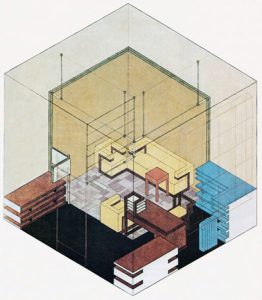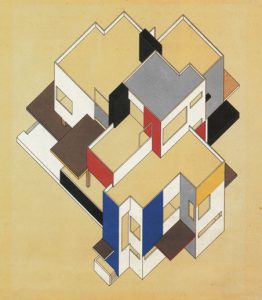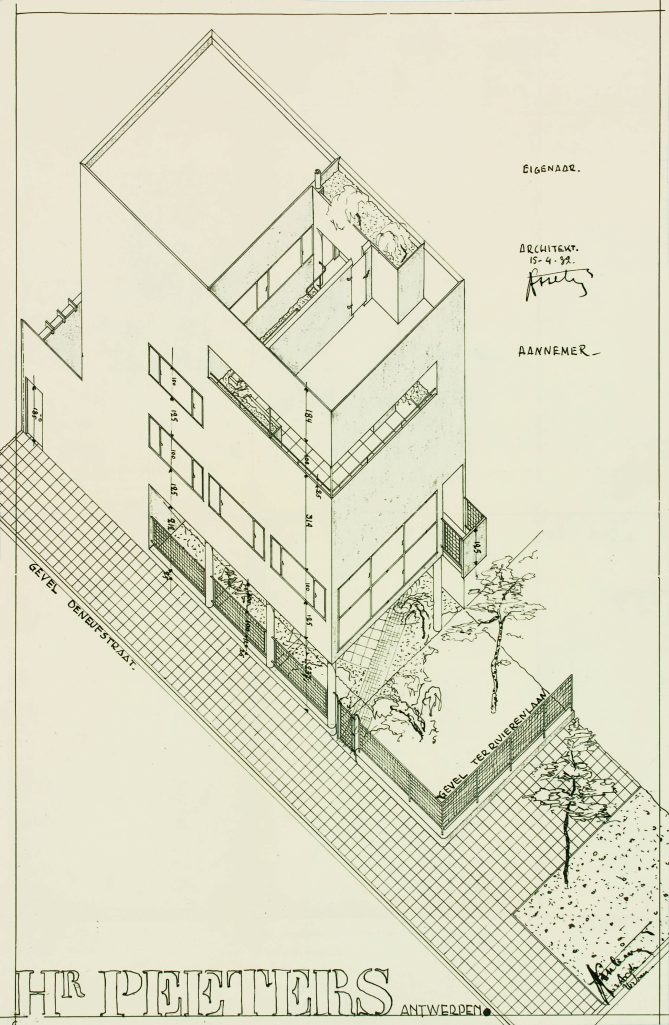The first real architectural axonometries were seen at two important exhibitions in 1923, which had been prepared months in advance. The first was that of the Bauhaus, from August 15 to September 30 in Weimar. Gropius had designed his office in Weimar and the 23-year-old Herbert Bayer had drawn an isometric view of it, with axes at 90°, 210° and 330°. The second exhibition was that of the architects of the De Stijl group, held from October 15 to November 15 at the Galerie de l’Effort Moderne in Paris. Theo Van Doesburg had designed an imaginary Maison Particulière together with the 26-year-old architect Cornelis van Eesteren. Van Eesteren had drawn an axonometry of it with axes at 90°, 225° and 315°. In this method, the flat roofs have the most important place. Eysselinck used the axonometry for two pictures of the Peeters’ house in spring 1932.


